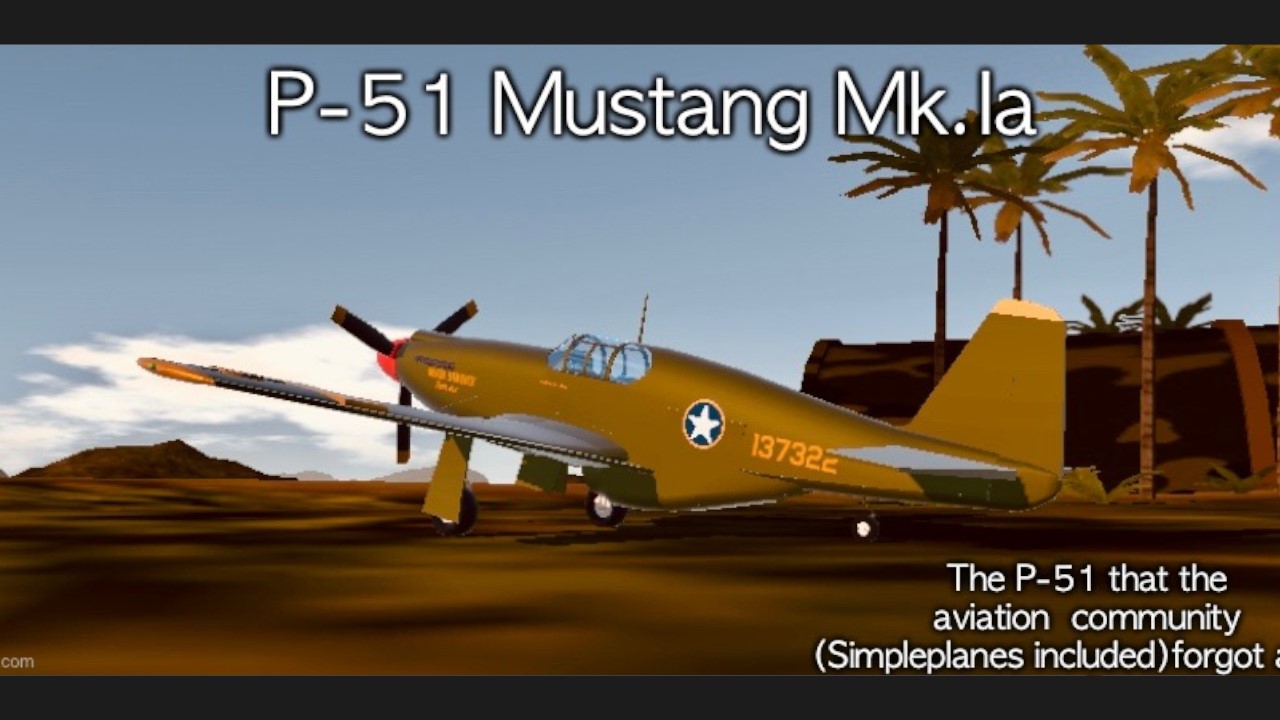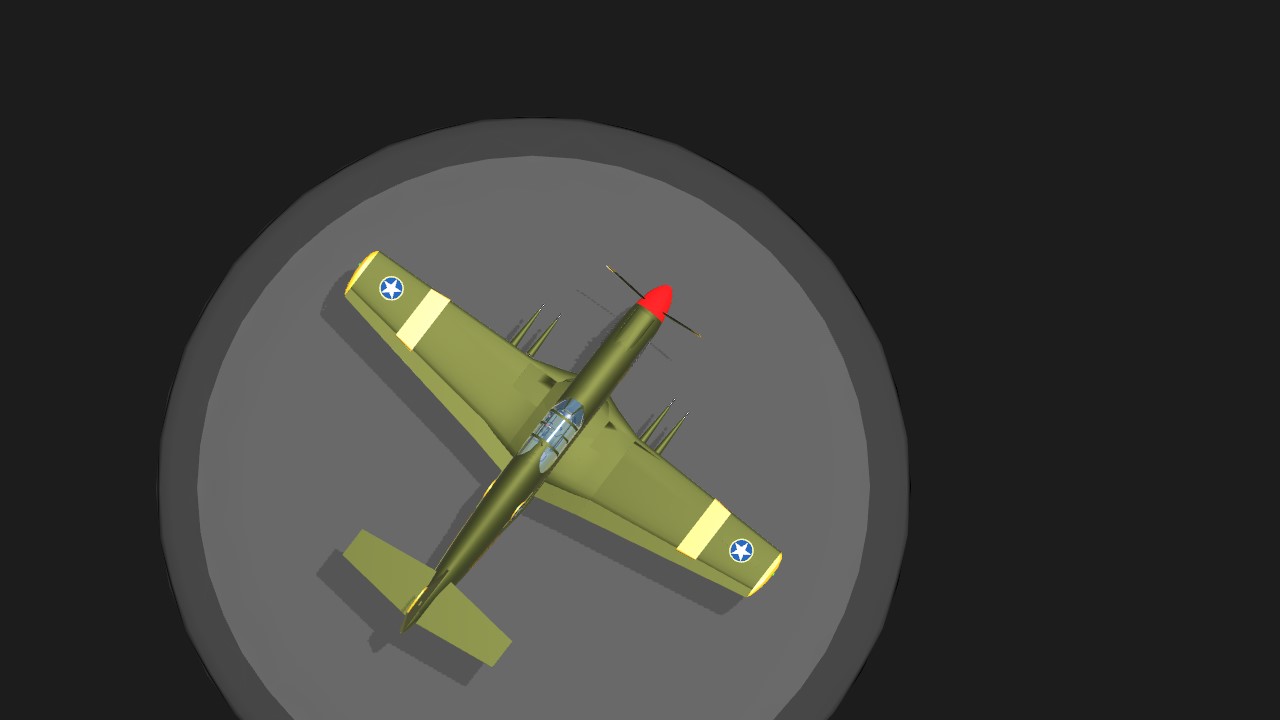the Forgotten Mustang
The first American order for 150 P-51s, designated NA-91 by North American, was placed by the Army on 7 July 1940.[5] This was on behalf of the RAF in a Lend Lease deal.[6] All but the last 57 went to the British. After the attack on Pearl Harbor, the USAAF 'held back' these Mustang Mk IAs for their own use.[7] 55 of these so-called P-51-1s were outfitted with a pair of K.24 cameras in the rear fuselage for tactical low-level reconnaissance and re-designated F-6A (the "F" for photographic, although confusingly also still referred to as the P-51 or P-51-1[7]). Two kept their P-51-1 designation and were used for testing by the USAAF.[clarification needed]
Two XP-51s (41-038 and 41-039) set aside for testing arrived at Wright Field on 24 August and 16 December 1941 respectively.[nb 1] The small size of this first order reflected the fact that what had been known as the USAAC up until late June 1941[8] was still a relatively small, underfunded peacetime organization. After the late-June 1941 reorganization of the USAAC into the United States Army Air Forces, roughly six months before the attack on Pearl Harbor changed the outlook for the United States regarding involvement in global hostilities against the Axis literally overnight, priority had to be given to building as many existing fighters – P-38s, P-39s, and P-40s – as possible while simultaneously training pilots and other personnel, which meant evaluation of the XP-51 did not begin immediately. However, this did not mean it was neglected, or testing and evaluation mishandled.[9]
The 150 NA-91s were designated P-51 by the newly formed USAAF and were initially named Apache, although this was soon dropped and the RAF name, Mustang, adopted instead. The USAAF did not like the mixed armament of the British Mustang Is and instead adopted an armament of four long-barrelled 20 mm (.79 in) Hispano Mk II cannon, deleting the .50 cal "nostril"-mounted weapons. The British designated this model as Mustang Mk IA, and would fit a number with similar equipment.[10]
It was quickly evident the Mustang's performance, although exceptional up to 15,000 ft (4,600 m) (the supercharger's critical altitude rating), was markedly reduced at higher altitudes. This was because the single-speed single-stage supercharger fitted to the V-1710 had been designed to produce maximum power at low altitude; above that, power dropped off rapidly. Prior to the Mustang project, the USAAC had Allison concentrate primarily on turbochargers in concert with General Electric; the turbochargers proved to be reliable and capable of providing significant power increases in the P-38 Lightning and other high-altitude aircraft, in particular in the Air Corps' four-engine bombers. Most of the other uses for the Allison were for low-altitude designs, where a simpler supercharger would suffice. Fitting a turbocharger into the Mustang proved impractical, and Allison was forced to use the only supercharger available. In spite of this, the Mustang's advanced aerodynamics showed to advantage, as the Mk I was about 30 mph (48 km/h) faster than contemporary P-40s using the same V-1710-39 (producing 1,220 hp (910 kW; 1,240 PS) at 10,500 ft (3,200 m), driving a 10 ft 6 in (3.20 m) diameter, three-blade Curtiss-Electric propeller).[11] The Mk I was 30 mph (48 km/h) faster than the Spitfire Mk VC at 5,000 ft (1,500 m) and 35 mph (56 km/h) faster at 15,000 ft (4,600 m), despite the British aircraft's more powerful engine (the Merlin 45, producing 1,470 hp (1,100 kW; 1,490 PS) at 9,250 ft (2,820 m).[12]
Although it has often been stated that the poor performance of the Allison engine above 15,000 ft (4,600 m) was a surprise and disappointment to the RAF and USAAF, this has to be regarded as a myth; aviation engineers of the time were fully capable of correctly assessing the performance of an aircraft's engine and supercharger.[13] As evidence of this, in mid-1941, the 93rd and 102nd airframes from the NA-91 order were slated to be set aside and fitted and tested with Packard Merlin engines, with each receiving the designation XP-51B
-Wikipedia

This was the first P-51 mustangs to enter service in wwII During late 1942 and 1943, this plane had the Allison engine and 4 Hispano mk2 cannons, and also came in a photo recon variant called the F-6A. It fought in the African and Mediterranean fronts, and the amount of bf109s and stukas that this plane shot down is unknown, this one is called mah sweet Eva lee and was part of the 154th OS, 68th OG, USAAF in Morocco in 1943, she took part in the Tunisian front in 1943.

I have not been posting in a while but that’s cause I never had much time to post anything but anyways here it is

Here’s a photo of the P 51 mk.ia Model kit, that was already built
 here’s a black-and-white photo of the real thing
here’s a black-and-white photo of the real thing
Specifications
Spotlights
- StockPlanesRemastered 2.7 years ago
General Characteristics
- Predecessor P-51-B
- Created On iOS
- Wingspan 38.9ft (11.9m)
- Length 33.3ft (10.1m)
- Height 12.3ft (3.7m)
- Empty Weight 12,412lbs (5,630kg)
- Loaded Weight 14,774lbs (6,701kg)
Performance
- Power/Weight Ratio 0.337
- Horse Power/Weight Ratio 0.11
- Wing Loading 59.5lbs/ft2 (290.7kg/m2)
- Wing Area 248.1ft2 (23.1m2)
- Drag Points 3680
Parts
- Number of Parts 279
- Control Surfaces 14
- Performance Cost 1,087







lol.. Good job
Yes
You
@GabrielFangster70
@Xgamerxbuilder really? Just a yes
Yes